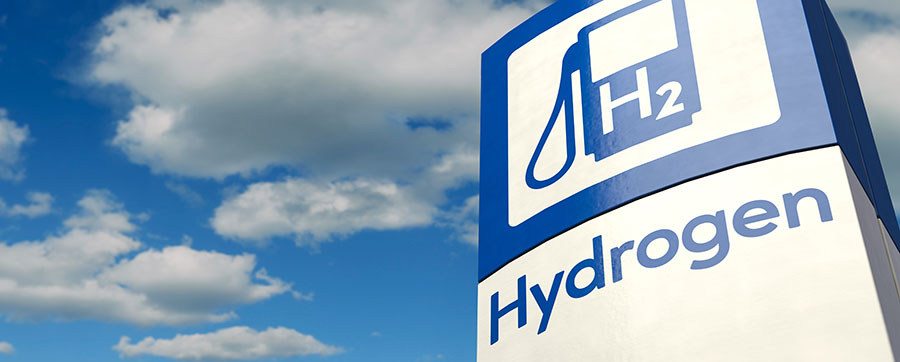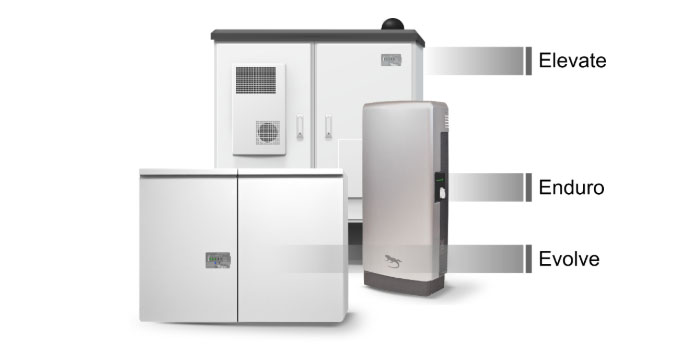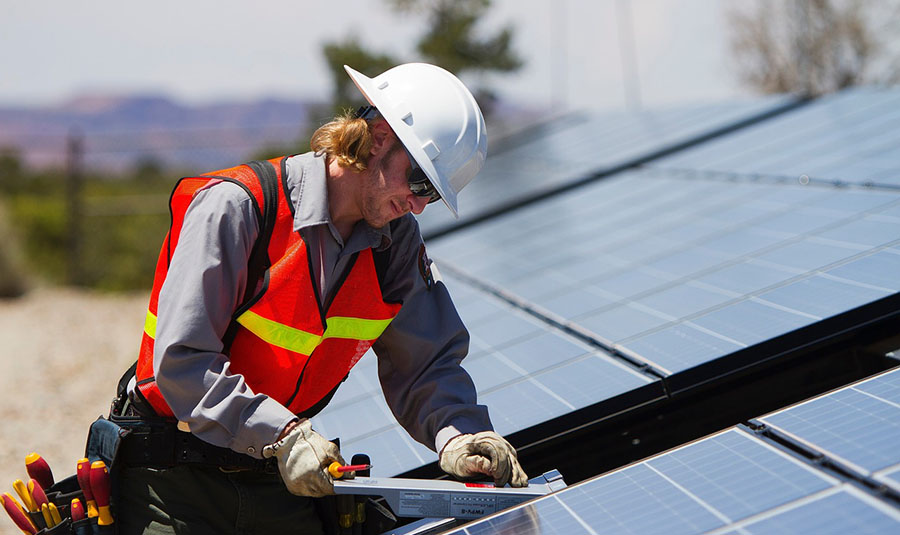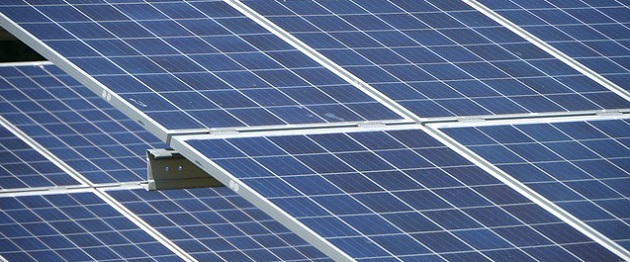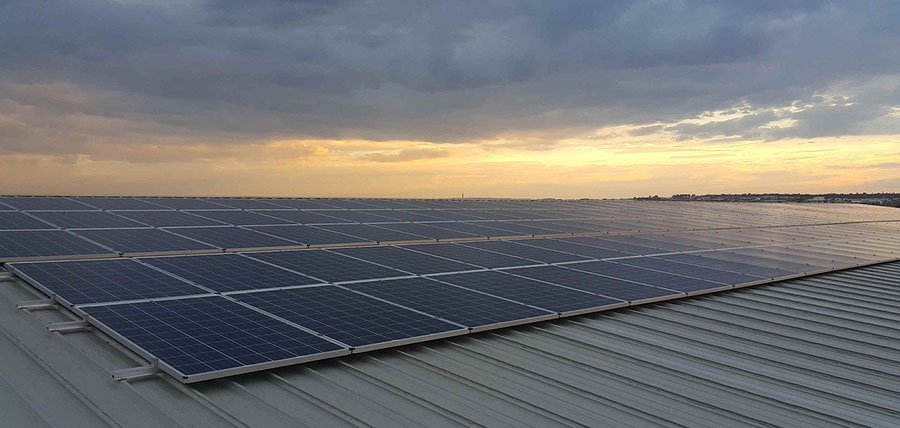The stakes in this election could not have been higher, said renewable-energy policy experts who participated in a Nov. 8 Chadbourne & Parke webinar on what the election results mean for the U.S. renewables market.
President Obama took office in 2008 with an ambitious energy agenda that included cap and trade and moving away from reliance on fossil fuels. By 2010, the cap-and-trade effort had stalled in Congress and Republican criticism of the 2009 stimulus—especially its energy provisions—had increased. Renewable energy, which had far more bipartisan support before the current election cycle, became highly politicized, said Keith Martin, a partner with Chadbourne & Parke, who moderated the webinar. At the same time, low natural gas prices made it harder for renewables to compete.
Now, as Congress heads into its lame-duck session, federal renewable-energy cash-grant and loan-guarantee programs are winding down, and the PTC, which has been a boon for the wind industry, is set to expire for wind on Dec. 31.
Congress returns to Washington on Nov. 13 facing $700 billion in automatic tax increases and spending cuts if Republicans and Democrats cannot broker a deal on the budget and deficit reduction. In that context, tax and policy experts expect a PTC extension to be included in one of the many budget or other bills expected to be passed before year-end.
"I believe the PTC for wind will be extended," said Joseph Mikrut, a partner at Washington, D.C.-based tax-policy firm Capital Tax Partners and a former tax legislative counsel for the U.S. Treasury Department. "It's just finding the right vehicle to attach the PTC extension to," he added. With all of the things Congress may seek to finish before year-end, "there will be things to attach it to," Mikrut said, and hopefully that will come in the lame-duck session.
One place to start would be legislation the Senate Finance Committee passed in early August extending the credit and changing PTC rules, Mikrut said. That bill, the Family and Business Tax Cut Certainty Act of 2012, includes provisions to extend for one year, through 2013, the 2.2-cent/kWh production tax credit for wind. It would also modify PTC rules to allow renewable-energy facilities that start construction before the end of 2013 to qualify for the 10-year credit. Current rules call for projects to be placed into service by the end of this year to qualify for the credit.
The bill would also allow renewables projects that start construction before the end of 2013 to elect to take the 30-percent investment tax credit in lieu of the PTC.
With Obama in the White House, the nation no longer has a president who is going to run for re-election, said Jonathan Weisgall, vice president of legislative and regulatory affairs at MidAmerican Energy Holdings. That may make it a little easier for Republicans and Democrats to craft an agreement on previously divisive issues. Without the prospect of having to run again, the president can govern more for policy than politics, he said, while opponents don't have to fear giving him a political advantage if they coordinate on policy, he added.
In California, Democrats won a decided advantage in the election, taking supermajorities in both the Senate and the Assembly for the first time in more than 70 years. That could give lawmakers an impetus to push for a higher renewables standard.
"In terms of policy, California is going to get serious about 40% [renewables portfolio standard] in 2025 or 2030," Weisgall said. "It wouldn't surprise me to see legislation to aim for 40%" RPS.
When Gov. Jerry Brown signed California's 33-percent RPS legislation, he included a signing statement saying 33% "is really just a starting point—a floor, not a ceiling." The CEC, in its 2012 Integrated Energy Policy Report update, is recommending its staff evaluate a 40-percent or 50-percent renewables standard by 2030.
"We couldn't have hoped for a better outcome through the lens of renewable energy in California," said John Stanton, vice president of government affairs at SolarCity. In addition to increasing Democratic strength in both houses, voters passed Proposition 30, Gov. Brown's tax measure, and Proposition 39, which raises additional revenue for the state and allows the state to avoid draconian cuts, he said.
At the federal level, the tricky part will be translating the ability to work together into real policy drivers for renewables. The PTC, for example, could be extended for another year, but there still needs to be a conversation about renewable-energy tax incentives and federal policies over the long term.
That could come as the new Congress is seated and takes on the issue of tax reform.
"I think the best we can hope for is the House agrees with the Senate position short-term and then some longer examination of what the PTC should be in the long term" under the new Congress, Mikrut said.
"Obviously the one-year extension is absolutely pivotal and a crucial matter [that] must be addressed in the lame-duck session," Stanton said. In the longer term, any reform or change in the PTC must address the placed-in-service metric for eligibility, he said. "Hopefully Congress is going to understand that the placed-in-service metric, while appropriate for a permanent tax credit. . .is inappropriate for an expiring provision, for the PTC."
Tax reform could play a big part in the debate in Congress over deficit reduction, and that means "all of these energy tax incentives are going to be on the table," said Richard Glick, vice president of government affairs at Iberdrola Renewables. "I think we all know we are going to get phased out at some point."
While the renewable-electricity production tax credit for wind expires this year, the PTC for other renewables—closed- and open-loop biomass, geothermal, biogas, hydro and marine technologies—expires at the end of next year. The federal investment tax credit, which generally provides a tax credit of 10% to 30% of expenditures for solar, fuel cells, small wind turbines, geothermal, microturbines and combined heat and power systems, is geared to systems placed in service before Dec. 31, 2016. The stimulus act of 2009 allowed technologies eligible for the production tax credit to use the investment tax credit, although they must adhere to PTC in-service deadlines.
Ultimately the industry needs to be competitive without the incentives, Glick said, but there are also policies the government could enact to drive renewables, such as a clean-energy standard or a carbon tax.
Such a tax, directed at a very few sources, could very well be one of the broad options looked at to raise revenue at the federal level, Mikrut with Capital Tax Partners said. Still, he placed the odds of a carbon tax actually being enacted at about 25%. Weisgall with MidAmerican Energy thought the odds to be even slightly lower than that, at about 20%.
"The question politically is would a Republican House of Representatives approve a carbon tax," he said. "I'm a little skeptical."
Stanton also downplayed the idea of further Department of Energy-backed loan programs for clean energy in the wake of Solyndra (and the House-passed No More Solyndras Act), or of some kind of "green bank" for renewables.
The big issue going forward at the federal level is whether the "very aggressive" attempt by House Republicans to isolate and alienate the renewable-energy sector will abate to a significant degree in the wake of the election, Stanton said. "My hope is that that sentiment cools."
Mavis Scanlon
Energy Prospects West


